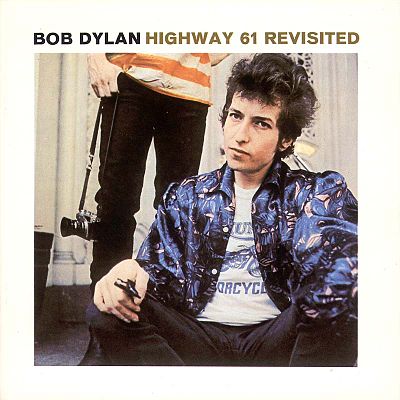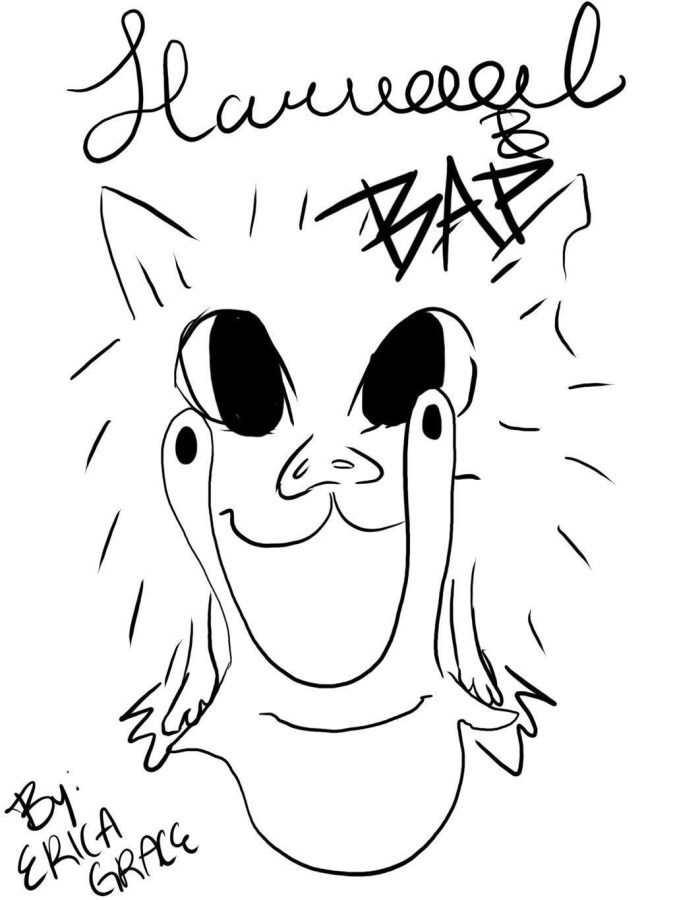By George Crowley, ’16, Tech Desk Editor
Highway 61 Revisited is perhaps Bob Dylan’s most influential and famous work. His sixth album, it represented a serious change in direction for Dylan. Until then, every one of his albums had been almost entirely acoustic. But in Highway 61 Revisited, Dylan hired rock musicians to provide backing for every track except the final one, “Desolation Row”. The powerful guitar backing, combined with Dylan’s use of blues themes and poetic lyrics, creates a deeply meaningful and eerie album. A multitude of instruments are featured throughout: most notably guitar, organ, and harmonica. He released the album on August 30, 1965, after only two and a half months of recording. The album captured the socio-political chaos of America at the time including the civil rights movement and the Vietnam war. Many have argued that the “sense of the 60s” started with this album, though it is really a continuation of what the Beat Generation started 10 years earlier, when Kerouac and Ginsberg led the way with their nonsensical but equally meaningful epics.
Dylan began work on the album after a tour of England in May 1965 that left him feeling disillusioned and exhausted with singing. He wrote 20 pages of free verse poetry based on his feelings, which he later described as “a long piece of vomit.” This “long piece of vomit” would later become the famous track “Like a Rolling Stone”. He started recording in mid-June with a troupe of rockers that provided the backing. In between this and his second recording session, he played an extremely controversial electric set at Newport Folk festival that resulted in some booing. He returned to the studio, and finished recorded from July 29th to August 4th. With that, one of the iconic albums of the 60s was finished.
The album leads off with “Like a Rolling Stone”, perhaps one of Dylan’s most famous songs. It starts with a burst of drums and smooth electric guitar that quickly leads into Dylan’s harsh, questioning voice. He questions the listener directly over and over “how does it feel?” and uses other such poignant lyrics such as “with no direction home.” Dylan succeeds at expressing his unique blend of blues and rock in a way that leaves the listener questioning his or her own life.
The second song, “Tombstone Blues” is immediately faster paced than “Like a Rolling Stone”. It is filled with more upbeat electric guitar, with a few short, biting solos. He sings of a cadre of historical characters, “the reincarnation of Paul Revere’s horse,” a metaphor for patriotism, and Jack the Ripper, most notably. The song can also be taken as a protest against the Vietnam War. He satirically represents Lyndon B. Johnson’s extremely pro war attitudes with the line “Death to all those who would whimper and cry.” Later in the song, he calls Johnson “the king of the philistines,” who “fattens the slaves” then “sends them out to the jungle,” a clear reference to the Vietnam war.
“It Takes a Lot to Laugh, It Takes a Train to Cry” is more of a return to Dylan’s folk music roots, with him providing the backing track on piano. It isn’t necessarily one of the strongest or most meaningful songs of the album, but it provides a nod to his past, using a few lyrics from older blues songs. And in an album that provides a departure from his past, it’s a necessary song to have.
“From a Buick 6” is another upbeat blues song that opens similarly to “Like a Rolling Stone”, with a drum shot and guitar riff. He sings about a “graveyard mama” that seems to either give him life, or tug him towards death, depending on the verse. Combined with his youthful voice and piercing harmonica riffs, the song is very upbeat and catchy, despite its symbolic nature.
In direct contrast to the last two songs, “Ballad of a Thin Man” is filled with meaning and metaphor. Bob Dylan’s piano fills the background, while eerie organ riffs come and go, complimenting Dylan’s vocals. He sings about a “Mr. Jones,” who has no clue what is going on, despite his education and intelligence. This is a criticism of both the mainstream media that failed to understand the counterculture movement of the 60s, and the movement itself. He criticizes the media, but at the same time criticizes how exclusive the movement has become, how difficult it is to be “hip.”
“Queen Jane Approximately” Provides a more light-hearted counterpart to “Like a Rolling Stone”. The guitar riffs sparkle, the harmonica shines through every once in a while, and the lyrics are more cheerful than earlier songs in this album. Dylan repeats over and over “won’t you come see me queen jane?” giving the song a more lighthearted, personal feel than his other songs that seem to deal with much bigger issues.
“Highway 61 Revisited” shares its title with the album, which is in itself very meaningful. Highway 61 passes by the stomping grounds of many influential musicians; Muddy Waters, Elvis Presley and Charley Patton. In addition, the crossroads of Highway 61 and Route 49 are where blues king Robert Johnson is rumored to have sold his soul to the devil. The songs explores numerous ridiculous ideas, including a promoter who wants to stage a world war on Highway 61. The song centers on Highway 61 as a place where anything can be done. The song continues the upbeat blues theme of “Queen Jane Approximately”, and the biblical allegories that are present throughout the album. It is one of the most interesting songs in the album, with all of its wild scenarios.
“Just Like Tom Thumb’s Blues” is a slower paced song that describes a crazy stay in the town of Juarez. The song, filled with smooth guitar and piano and punctuated with harmonica creates a mournful mood that isn’t present in the rest of the album. The lyrics at the same time create a slight sense of confusion. They appear to make sense, but if you examine them a little closer they become nonsensical. Dylan uses this technique to create a hazy effect that mirrors the experience of the song’s main character. The song seems to describe someone’s fall from grace, “started out on burgundy/ But soon hit the harder stuff.” It finishes with the line “I’m going back to New York City/ I do believe I’ve had enough,” perhaps a reference to Dylan’s disillusionment after his England tour.
The album finishes with “Desolation Row”, an 11 minute exclamation, the only song in the album to have acoustic guitar. The flow calls to mind again the beat poets of the 50s, Kerouac and Ginsberg, whom Dylan worked with. As with other songs in the album, it references philosophers and both biblical and Shakespearean characters. It opens with “they’re selling postcards of the hanging” perhaps a criticism of the political climate with regards to the civil rights movement of the time. He also seems pessimistic about America’s future, comparing it to the Titanic, with passengers shouting at each other “which side are you on.” Does it really matter what side you’re on if you’re all sinking on the Titanic? This song is a representation of how Dylan viewed America at the time, evidently not in a very positive light.
Bob Dylan’s Highway 61 Revisited is perhaps one of the most important albums to come out of the 60s, with the drastic changes it caused in blues and folks music, and the political awareness it brought to music. Dylan combines so many artistic elements, making his album one that spans genres, and almost becomes poetry and a political statement. It is easy to dismiss older albums such as this in our day and age, but I would argue that they are still extremely relevant. And beyond its political relevance, it is still worth a listen, just to better understand where some of our contemporary music has come from.






